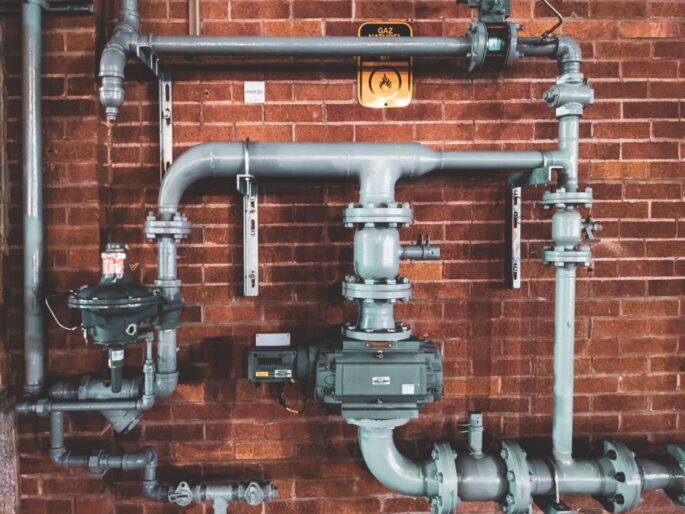As winter approaches and you are busy preparing your building for the colder weather, don’t forget your pipes. Having a pipe burst in your building could mean drywall replacement, interior damage, and work stoppage, so it’s a costly occurrence you want to avoid.
While you may not be able to guarantee complete protection for your pipes, especially when the frigid temperatures hit, there are some precautions you can take to limit your risk.
Protect exterior pipes
Pipes that are outside are more susceptible to the cold, of course, but this also applies to pipes along an exterior wall or with exposure to the elements, like in your loading bay. Insulating them to keep them warm is the key. This can be done inexpensively with spray foam, fiberglass insulation, or pipe wrap found at your local hardware store.
Keep the heat in
Prioritize rooms with plumbing by making sure that the areas you’re heating are retaining as much heat as possible. Check door, vent, and window seals for drafts and re-seal any spots where you detect air leakage. These tend to be easy fixes you can address with a caulking gun and weather-stripping once you locate the target areas.
You may also want to have your HVAC inspected to confirm its efficiency, so you know that the heat you’re pumping into those rooms is reaching its destinations properly.
RELATED: Preventative HVAC maintenance tips for fall
Pay attention to hoses and faucets
If you have exterior hoses and faucets, they can pose a risk to the pipes they’re connected to if they freeze. Remove and store all hoses so that ice doesn’t form from any residual water and drain the water from your faucet. Doing this will also alert you if there’s a leaky valve, so you can replace that before an issue arises.
As an added precaution, pick up a faucet cover from your local hardware store. These are typically inexpensive foam covers that will help protect that faucet from direct exposure to the wind and snow.
You can’t control the weather, but you can protect your building and your investment by keeping your pipes as warm as possible. Taking these steps is an effective way to limit this risk of freezing pipes while saving you money on heating your building at the same time.









